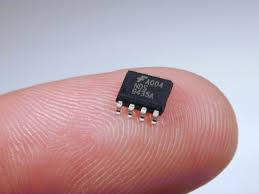Properties of the resistance barrier in the propagation of nano-transistors and nano-chips based on nanoelectronics Ph.D.
Author and Researcher: Engineer Afshin Rashid
Note: In the nano-transistors and nano-chips replication, the super-nano-electronic properties of each grain are also effectively employed, while in the amplified components it also increases dramatically, as each nanoelectron component itself has hundreds to thousands. The layer is formed.
In the reproduction of nano-transistors and nano-chips, nano-electronic properties are significantly improved , such as: Yang coefficient increase, tensile strength, heat resistance deformation, fire resistance , resistance barrier (ion conductivity) And their advantage is that they have no significant effect on the optical properties of the polymer: the optical thickness of a single nano-electron layer is much less than the wavelength of visible light, and is optically transparent and almost colorless.
In the proliferation of nano-transistors and nano-chips based on electronic nanotechnology, the change in the distance between the particle atoms and the particle geometry also affects the electronic properties of the material when the particle size decreases as the electrical bonds in the metals become finer. In the nanostructure and resistance barrier, the electronic quantity that is more readily available is the ionization potential, and the ionization potential is smaller in the size of the smaller nanostructured grains, which decreases with increasing particle size. It is found that increasing the ratio of surface to volume and variations in electronic geometry and structure have a profound effect on the chemical interactions of matter and, for example, the activity of small particles changes with the change in the number of atoms (and thus the particle size).
Nano-transistors and nano-chips replicate two methods of fabrication : the bottom-up method and the top-down method. In the bottom-up method, materials and materials are made of molecular surface based on the principles of molecular chemistry just like a wall made of brick-to-brick. In the top-down construction method, nanoscale objects are manufactured in larger quantities without atomic control.



